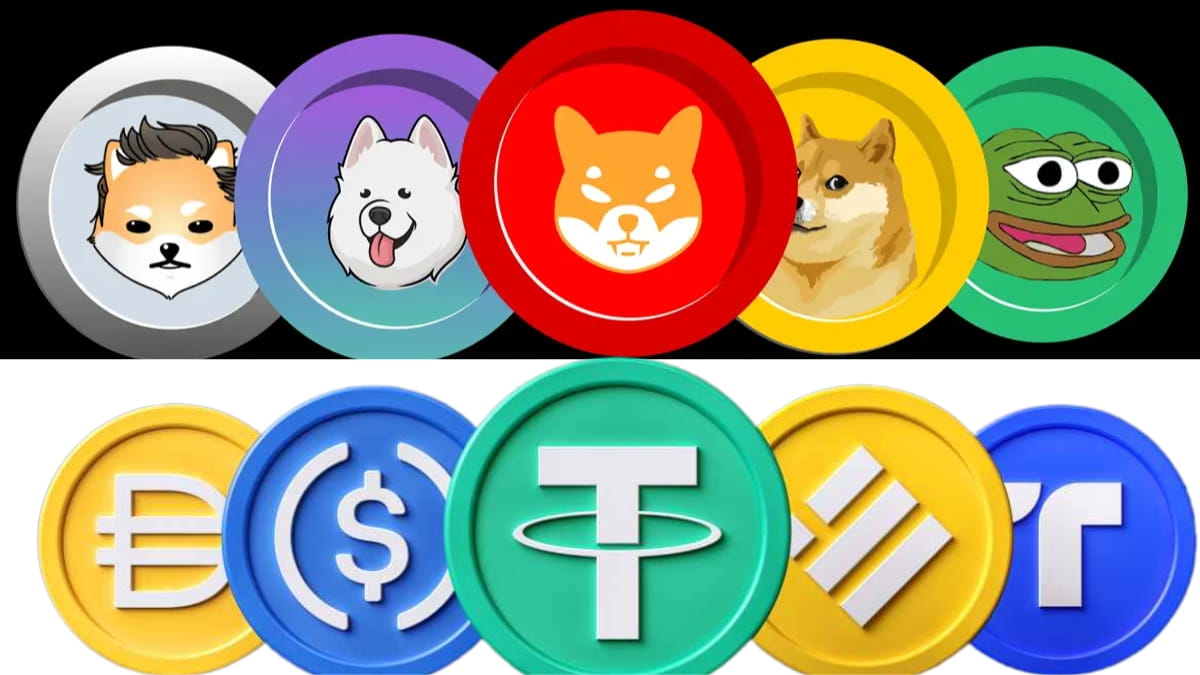
Both memecoins and stablecoins have gained huge traction since the blockchain-based currencies hit the market, and most recently, Bitcoin, one of the widely popular cryptocurrencies, attained an ATH near to $125,000.
According to the data from CoinMarketCap, when writing, the memecoin market cap is approaching $80 billion and is at $71.09 billion; at the same time, total trading volume was $15.72 billion.
On the other hand, stablecoins were collectively making $261 billion in market capitalization, and their trading volume is $182,657,054,102.
In today’s informative piece, we will dive deep to understand what primary catalyst could push memecoins and stablecoins to new highs and what heights they could reach by 2025 end.
How high will the memecoins market reach by 2025?
As its name suggests, memecoins primarily evolved as a meme, and nowadays, memecoin has been valued at over $50 billion, and Dogecoin was one of the 1st memecoins of the market.
In 2024, the memecoin market experienced a surge of 500% growing from $20 billion to $120 billion by the end of that year.
Some analysts expect that the momentum seen last year will be followed by the market in 2025 and is speculated to touch the milestone of $150 billion by the end of this year.
However, the projections vary widely, but a balanced estimate considering historical growth and current sentiment suggests the memecoin market could range between $150billion – $200 billion.
Over the time memecoins such as Pepe. Floki, Bonk, Fartcoin and Pudgy Penguins have gained massive traction, and even some of them are becoming popular because of the sparking debate over their ETFs approval.
As seen in the past cycle, tweets from famous people such as Elon Musk and others have historically sparked short-term rallies; however, social media has played a vital role in the popularity and wider circulation of memecoins.
Also, the easy process of listing memecoins on centralized and decentralized exchanges has offered broader accessibility, yet some memecoins are attempting to integrate use cases such as gaming, tipping, or staking.
Memecoins are often seen as low-entry, high-reward assets, especially attractive to retail investors, with rising Bitcoin prices creating renewed bullish sentiment across the market, spillover effects are likely to benefit memecoins too.
Stablecoins on path towards $350 billion
While memecoins are attracting hype, stablecoins are silently becoming the backbone of the crypto economy, and their utility is facilitating trading, lending, and remittance with others.
When writing that the stablecoins market is dominated by USDT with the highest market capitalization, followed by USDC and DAI, it is worth noting that global fintech firms and even some central banks are increasingly exploring stablecoins for cross-border payments.
If institutional adoption and embrace continue, there are expectations that the stablecoin market could touch $300 billion to $350 billion by the end of this year.
The skyrocketing trend of tokenizing assets such as real estate, commodities, or equities often relies on stablecoin settlement; this trend’s continuation could boost the stablecoin global market capitalization.
Dozens of jurisdictions, including the United States, European Union, and Singapore, including Dubai, are working on the formation of the best set of rules and regulations for the digital asset industry.
Conclusion
Memecoins and stablecoins are poised for significant growth as the crypto market matures. While memecoins thrive on community hype, social media influence, and speculative momentum, stablecoins continue to gain traction as reliable instruments for utility-driven use cases like trading, payments, and asset tokenization.
With favorable market sentiment, growing institutional interest, and ongoing regulatory developments, analysts believe memecoins could reach a market cap of $150–$200 billion, while stablecoins may soar to $350 billion by the end of 2025.
As adoption deepens and innovation expands, these digital assets are set to play even more vital roles in the evolving blockchain economy.



